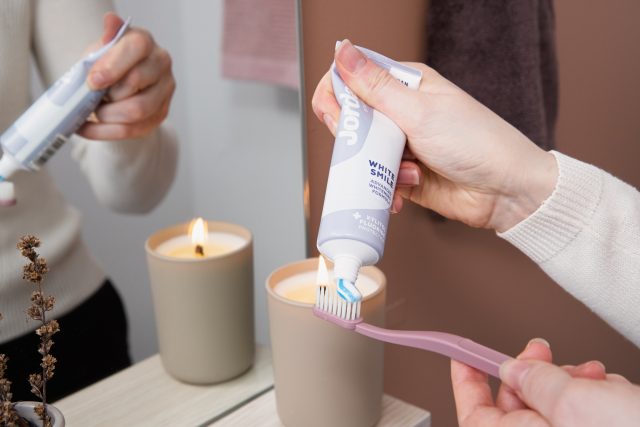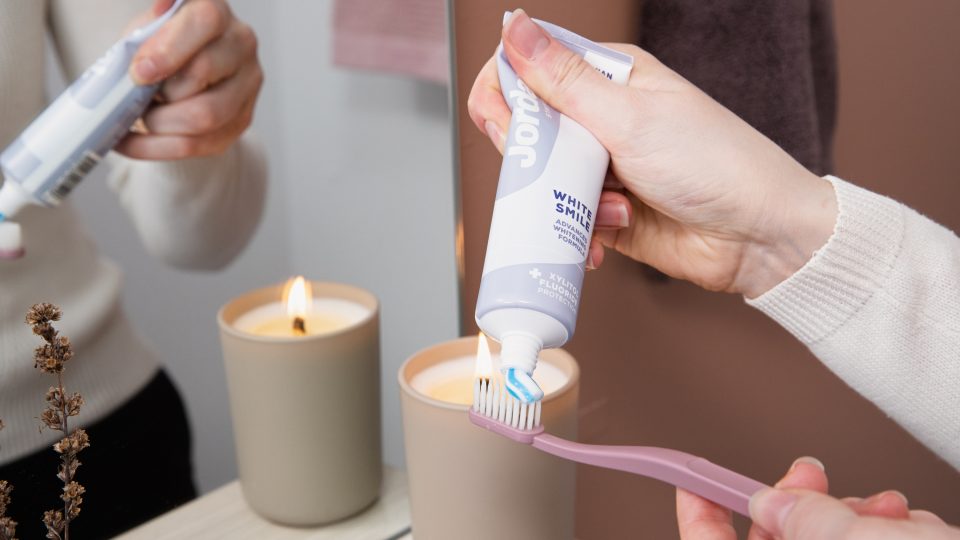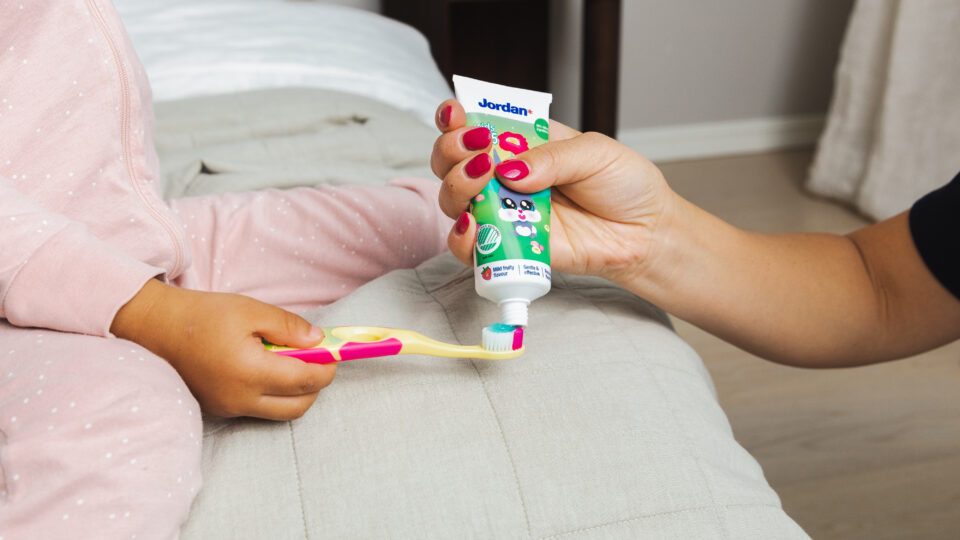The benefits of fluoride toothpaste
There is a common myth that fluoride is bad for your teeth. In fact, the benefits of fluoride for your teeth are great and well documented.

After World War II, tooth decay was a public health issue in many countries. The attempts to solve the issue started with scientists discovering that water with fluoride indicated a reduction of tooth decay. Water fluoridation showed a tooth decay reduction amongst children of as much as 50 percent, without side effects. Other methods using fluoride, like fluoride tablets and toothpaste containing fluoride were tested as well. As a result of these tests, the benefits of fluoride are well documented. Fluoride toothpaste prevents caries and provides good oral health (1,2).
WHAT IS DENTAL CARIES?
Tooth decay, also known as dental caries and or cavities, is the most common oral health issue. It is likely to occur on the chewing surface, along your gums, between your teeth or on the surface of the roots if they are exposed. Dental caries can occur on both milk teeth and permanent teeth. The likelihood of caries to occur varies from person to person and depends on the stage of life. One’s general health, medication usage, eating habits and dental hygiene are some of the factors that affect the likelihood of caries to develop.
Our teeth are made of four major tissues: dental pulp, cementum, dentine and enamel. Each of these tissues has a specific function. The enamel tissue functions as the protecting layer. Additionally, it consists mainly of hydroxyapatite, which gives teeth their rigorousness. If teeth are not cleaned properly a layer of plaque will be formed on the teeth’s surface. This is built by spit, food and bacteria over time. The bacteria in the plaque can produce acids which are damaging the tooth enamel. Hence, this is one of the main reasons why caries develop. Caries starts out as a little dent in the enamel tissue. If no action is taken, the bacteria can develop a cavity by breaking through the enamel tissue and reaching the dentin.
SYMPTOMS OF CAVITIES
Tooth decay is not necessarily something that is discovered at an early stage. Usually pain is not felt from having dental caries. Thus, it is rare to have an idea of the size of the cavity before a dentist discovers it. Therefore, it is recommended to visit the dentist on a regular basis. Normally, there is no pain until the cavity is close to a nerve and our tooth gets sensitive to sweet, hot or cold food and drinks.
Toothache is painful and can get worse if we get an inflammation in the enamel tissue. Such an inflammation can also turn into pulpitis, which is an inflammation in the dental pulp that can reach the roots of our teeth.
THE BENEFITS OF FLUORIDE
Every day our mouth goes through two naturally occurring processes, demineralization and remineralisation. For example, after eating, the pH value in our mouth drops below a critical point and the demineralisation process starts. During this process, minerals like calcium and phosphate are removed from the enamel tissue, initiating the dissolution of this tissue. Once the pH value in our mouth is back above the critical point, the remineralization process which the neutral saliva in our mouth naturally increases the pH value, takes over.
A good balance between the remineralization and demineralization processes will lead to a healthier and stronger enamel tissue. However, if the remineralization process cannot keep up with the demineralization process caries will form. One of the benefits of fluoride is that it favors remineralization and hence contributes to the prevention of caries (2).
MYTH VS. FACT:
• Myth: Fluoride toothpaste can be toxic.
• Fact: The amount of fluoride allowed in toothpaste is strictly regulated (3). We would have to eat a whole tube of toothpaste to even get symptoms of fluoride intoxication. The maximum allowed amount of fluoride in toothpaste for adults is 0,15 grams in a 75 ml. tube. In other words, you would have to eat 6,5 tubes at once for fluoride to be life threatening.
• Myth: Fluoride in drinking water or toothpaste can cause cancer.
• Fact: Research has shown that the amount of fluoride which is added to toothpaste does not raise the risk of cancer.
• Myth: Fluoride does not help against tooth decay.
• Fact: Fluorapatite is a mineral the tooth enamel creates when fluoride is present, which is more resilient to an increase of the pH value above the critical point than hydroxyapatite. This means that fluoride makes the tooth mineral stronger and does therefore help against tooth decay.
Sources:
1. Rølla G, Jonski G Historien om fluortannpasta. Nor Tannlegeforen Tid. 2014: 124:624-27
2. Amaechi BT, van Loveren C Fluorides and Non-Fluoride Remineralization Systems. Monogr Oral Sci. Basel, Karger, 2013, vol 23,pp15-26
3. Regulation EC No 1223/2009 of the European Parliament and of the Council of 30 November 2009 on Cosmetic Products. Link to page.
You might want to read


Yellowing teeth: Myths and causes
Teeth discolouration is something we all have to deal with at some point in our life. There are several reasons that cause the yellowing of…
Read more
How much toothpaste should kids use?
Jordan's step toothbrushes come with a toothpaste guide, but how much toothpaste should children use at what age? Here's a guide for every stage of…
Read more